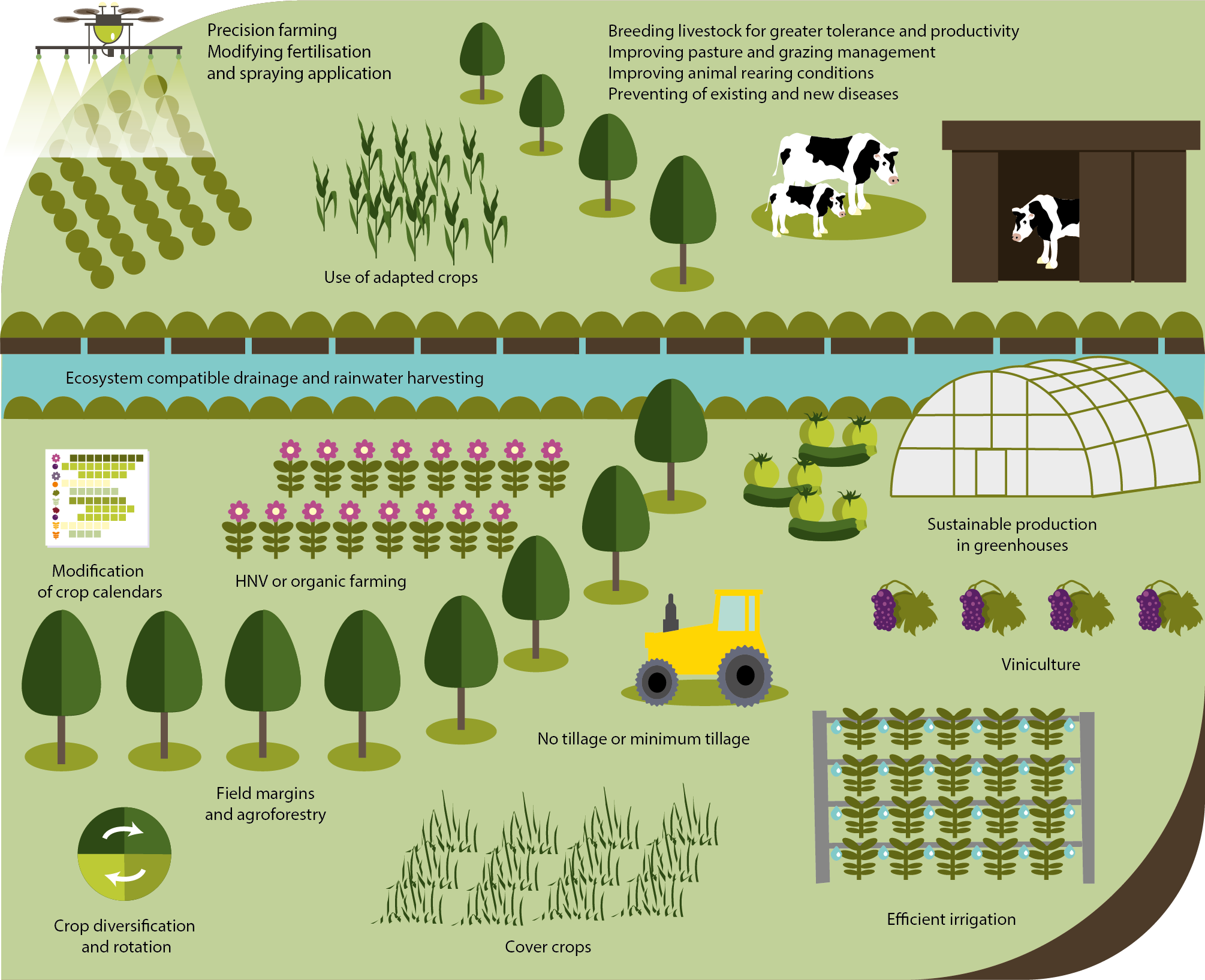Adverse impacts of climate change are already being felt across Europe. Extreme weather, including recent heatwaves in many parts of the EU are already causing economic losses for farmers and for the EU’s agriculture sector. Future climate change might also have some positive effects due to longer growing seasons and more suitable crop conditions, but these effects will be outweighed by the increase in extreme events negatively affecting the sector.
These adverse impacts are expected to increase, due to projected climate change, according to the EEA report ‘Climate change adaptation in the agricultural sector in Europe.’ The report looks at the key climate change problems facing agriculture in the EU and the outlook for the years ahead. It also gives an overview of how EU policies and programmes address climate change adaptation and includes examples of feasible and successful adaptation actions. The EEA assessment is consistent with the key messages from the recent report by the Intergovernmental Panel on Climate Change (IPCC) on climate change and land.
’New records are being set around the world due to climate change, and the adverse effects of this change are already affecting agricultural production in Europe, especially in the south. Despite some progress, much more must be done to adapt by the sector itself, and especially at farm-level, and future EU policies need to be designed in a way to facilitate and accelerate transition in this sector,’ said Hans Bruyninckx, EEA Executive Director.
Climate impacts have led to poorer harvests and higher production costs, affecting price, quantity and the quality of farmed products in parts of Europe. While climate change is projected to improve conditions for growing crops in parts of northern Europe, the opposite is true for crop productivity in southern Europe. According to projections using a high-end emission scenario, yields of non-irrigated crops like wheat, corn and sugar beet are projected to decrease in southern Europe by up to 50 % by 2050. This could result in a substantial drop in farm income by 2050, with large regional variations.
In a similar scenario, farmland values are projected to decrease in parts of southern Europe by more than 80 % by 2100, which could result in land abandonment. Trade patterns are also impacted, which in turn affects agricultural income. While food security is not under threat in the EU, increased food demand worldwide could exert pressure on food prices in the coming decades, the report says.
Adaptation at farm level is key
Most of the EEA member countries have national adaptation strategies in place. While all of these strategies include agriculture as a priority sector, only a limited number of countries included adaptation measures specific to the agriculture sector.
The EU’s adaptation strategy is a key driver of adaptation actions in Europe. One of its objectives is to mainstream adaptation in various EU policies, including the Common Agricultural Policy (CAP). However, adaptation at the farm level often does not take place because of lack of financing, policy support to adapt, institutional capacity and access to adaptation know-how. The EEA report stresses that more knowledge, innovation and awareness raising are required to improve the effective use of the already available adaptation measures, like introducing adapted crops, improved irrigation techniques, field margins and agroforestry, crop diversification or precision farming (see the figure).
These practices should also lead to lower greenhouse gas and air pollutant emissions, better management of soil, land and water resources, which in turn will help preserve local ecosystems and biodiversity. The report also suggests that EU Member States should better prioritise adaptation in the agricultural sector, for example by increasing the financing of adaptation measures through the implementation of the CAP.

Source: EEA, 2019
Agriculture remains a driver of climate change
The agricultural sector also has a crucial role to play in reducing its greenhouse gas emissions. Agriculture accounts for around 10 % of all greenhouse gases in the EU. Methane (CH4) emissions from enteric fermentation make up the largest share and ammonia (NH3) and primary particulate matter (PM10) are the two most important air pollutants from agriculture. While greenhouse gas emissions from agriculture have decreased since 1990, more will need to be done by the sector to contribute to reaching EU greenhouse gas emission reduction targets by 2030 and 2050.
To reduce greenhouse gas and air pollutant emissions, Europe needs to reshape its food system and reduce agricultural emissions from fertilisers, manure storage and livestock. This can be achieved through improvements in fertiliser use, in manure handling efficiencies and in animal productivity through breeding for example. Consumer behaviour will also need to change. Changing diets, like eating less meat and reducing food waste would contribute to additional reductions.
New EU brochure on forestry and adaptation
Related to the issue of climate change and adaptation, the European Commission’s LIFE (The Financial Instrument for the Environment and Climate Action programme) published a brochure on adaptation ‘Ready, steady, green!’, which shows how LIFE helps farming and forestry adapt to climate change.

Document Actions
Share with others